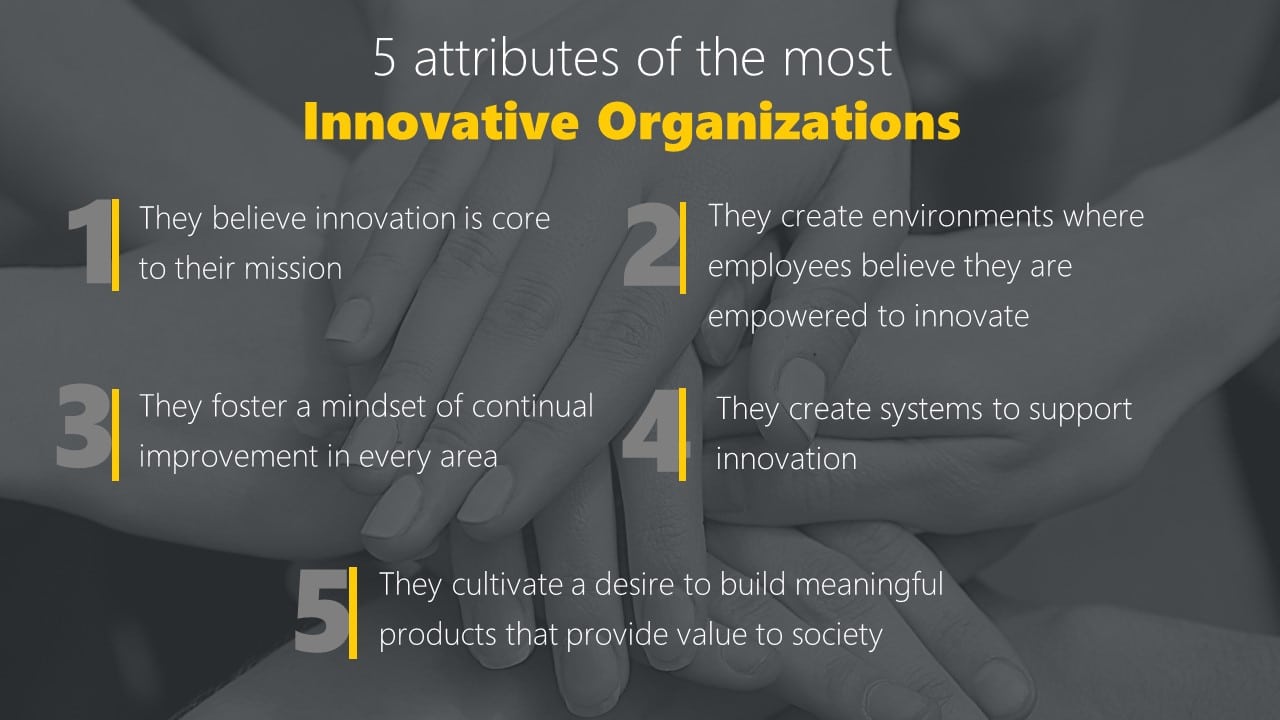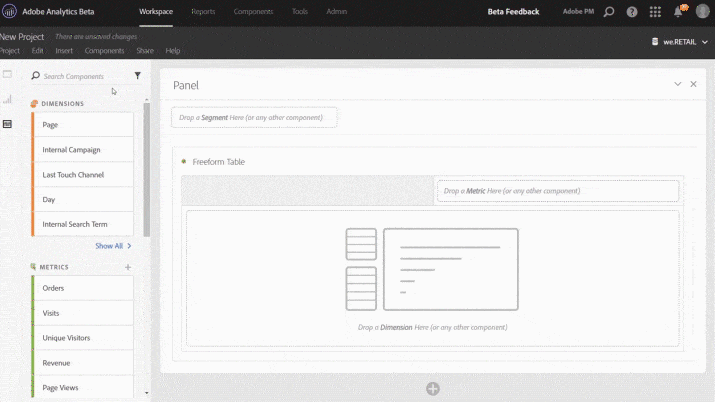Innovation in Analytics: Part 1 – Belief
Visitors to the lobby of Intel’s HQ are greeted by the following quote on the wall from Intel co-founder Robert Noyce:
Don’t be encumbered by the past. Go off and do something wonderful.
I walked by that quote many times when I worked at Intel and, more often than not, found my thinking expanded as I walked by. Doing something wonderful, regardless of what has been done before, exemplifies the spirit of innovation.
I recently had the opportunity to join Dr. Kumar Mehta in a webinar discussion on the topic of innovation, specifically, innovation in analytics. Dr. Mehta has been researching, writing and speaking about innovation for years, and it was inspiring to hear his observations on the five attributes of innovative organizations. In the latter portion of the webinar, I applied Dr. Mehta’s observations to several use cases within analytics ecosystems, with the aim of helping analytics practitioners be more innovative.
According to Dr. Mehta’s research, innovative organizations share the following five attributes:

Analytics practitioners who apply these attributes to their analytics practice will unlock a spirit of innovation by…
- Believing that analytics is core to innovation at their company
- Giving themselves permission to innovate
- Treating every day as a test, as an opportunity to learn
- Creating an innovation system with analytics at the center
- Giving themselves a mandate to create value for society
In this first in a series of posts on this topic of innovation, I would like to explore further how the first of Dr. Mehta’s innovation attributes can be applied to analytics teams.
Analytics teams often need to focus on near-term deliverables and answering tactical questions. How did last week’s campaign perform relative to last year? Did promoting our new show above the fold increase views by our target demographic? How are we defining margin? Is that blip on the trend line real or is it another data anomaly? These are important questions, but the questions often come faster than our ability to answer. What does innovation look like in this time-sensitive environment?
Innovation may look like a drag-and-drop interface or it may look like a cross-channel campaign enabled by a newly cleansed data source. It sometimes looks like a report that stakeholders immediately understand and quickly use to allocate next week’s marketing dollars. There is elegance in simplicity in these tasks. Creating a report that is used and valued, in the midst of everyday obligations, is no small thing. It requires adopting a spirit of innovation, of creating something new.
How can you transition your analytics practice to one where innovation is a core?
One example of an innovative analytics organization that came to mind during my conversation with Dr. Mehta is Adobe’s Analysis Workspace.

Thanks to its drag-and-drop interface, Analysis Workspace has changed the way analysts do their job. The design is clean and intuitive. It allows for quick iterations and explorations. Gone are the days of selecting a filter and staring forever at a circular timer while the screen refreshes with results. This truly was a breakthrough innovation for digital analytics.
I wanted to hear more about how Analysis Workspace came about, so I reached out to Ben Gaines, Director of Product Management at Adobe.
Ben points out that Omniture, purchased by Adobe in 2009, had assembled an array of analytics tools – SiteCatalyst, Discover, Data Workbench. Each of these tools had started with discrete advantages and functions, but the use cases converged over time and the multiplicity of tools was confusing both analysts and business users who just wanted to understand their customers and how their marketing was performing. It became clear to the team at Adobe that they needed to rationalize these tools into “one interface to rule them all.”
What stands out to me from this origin story is that the nucleus of the idea wasn’t a competitive assessment or customers telling them they had to create a drag and drop interface. And this wasn’t something the executive team at Adobe said they should go do. The product leadership team knew they needed to innovate because they knew their customer. They knew there was a better way. They gave themselves permission to innovate.
Ben adds that the features that truly complete and enhance Analysis Workspace were not from a requirements document created by the product team. The features that make the tool really stand out and that are most loved by users… most of these features came from engineers and designers being meticulously focused on improving the lives of their users.
An example is the decision to allow users to access nested menus with a right click. By tucking lesser-used actions into this menu, users had quick access to an expanded array of functionality, right at their fingertips, further delivering on the promise of analytics at the stream of thought. A lot of the underlying value is created by engineers being creative.
Here also we see a great example of people giving themselves permission to innovate. In this case it was the engineers and designers.
How can this help you? Like the Adobe Analysis Workspace team, perhaps you can start by envisioning an accelerated path to action for your customers. Whether you are creating reports, insights or tools, your customers probably want more of what you’re shipping and they want it faster.
What are the impediments to that accelerated decisioning? And whose job is it to advocate for that acceleration? It is probably yours. So go make it happen. Be meticulously focused on improving the lives of your users. Give yourself permission to use data and analytics to innovate. As we learned from Robert Noyce, “don’t be encumbered by the past. Go off and do something wonderful.”
If you are looking to strengthen your analytics team with external support from an analytics outsourcing partner, we would be happy to help you drive value through innovation and automation.

David McBride
David McBride is a 13-year veteran of the analytics industry, having held analytics leadership roles in media, retail, technology settings. David is passionate about helping...Read More

Don’t miss our next article!
Sign up to get the latest perspectives on analytics, insights, and AI.







